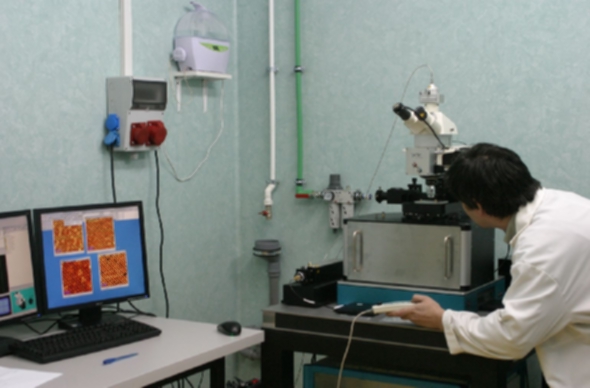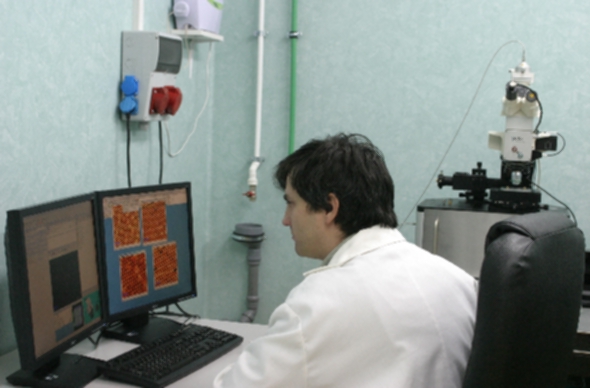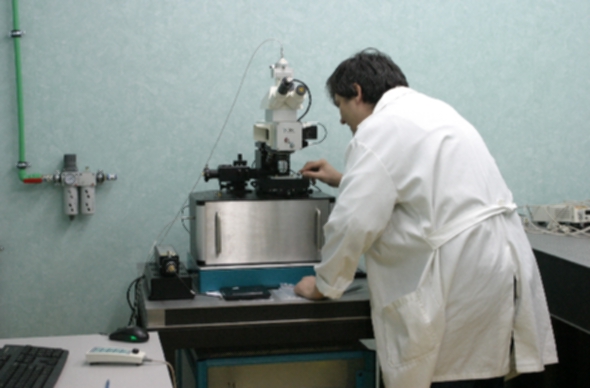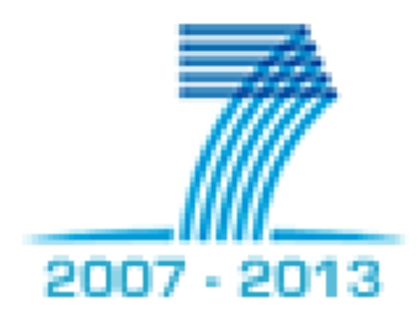|
snom
Witec Alpha 300Scanning Near-field Optical Microscope (SNOM)
 |
 |
 |
|
Dr. Cristian Kusko (IMT-Bucharest) performing near field optical measurements using the Witec Alpha 300S SNOM. |
There were three world class SNOM manufacturers that attend the tender taking place in August 2008. The winner was Witec GmbH, Germany. The equipment was installed in November 2008. Currently the SNOM is operational.
The Alpha300S System by Witec GmbH Germany is a Scanning Near-field Optical Microscope (SNOM) that combines the SNOM, Confocal Microscopy (CM) and Atomic Force Microscopy (AFM) in a single instrument. The Alpha300 S uses patented micro-fabricated SNOM cantilever sensors (aperture size typically 100 nm) for optical microscopy with spatial resolution below the diffraction limit (optical resolution of 50 – 100 nm). The SNOM cantilevers consist of a silicon cantilever with a hollow aluminum pyramid as a tip with the SNOM aperture at the apex of the pyramid.
The laser light used for optical imaging is focused into the backside of the hollow tip and then onto the sample.
The combination of Confocal Microscopy, SNOM and AFM in one instrument allows the use of confocal overview scans for quick and easy selection of the most appropriate sample area for the SNOM measurement. The SNOM mode can then be instantly accessed with a special SNOM objective holding the SNOM cantilever. While acquiring the SNOM image, the AFM topography is recorded simultaneously. All standard optical modes such as transmission, reflection or fluorescence are as well as the standard AFM modes (contact and alternative contact) are available in the purchased equipment. For SNOM and confocal excitation, various laser sources can be used for maximum experimental flexibility. To detect the scattered light, single counting photomultiplier, an avalanche photodiode detector or an InGaAs detector can be used in order to investigate a broad spectral range.
Technical characteristics of the purchased equipment.
 Operating Modes Operating Modes
- Near-field microscopy: transmission, reflection, collection, fluorescence;
- Confocal microscopy: transmission, reflection, fluorescence, can be upgraded with a Raman spectrometer;
- Atomic Force Microscopy contactand AC-Mode;
 Optical Resolution Optical Resolution
- Optical Resolution: Near-field Mode 100 nm, depending on aperture size;
- Confocal Mode typically 200 nm diffraction-limited;
 Detectors Detectors
- Single counting photomultiplier tube (PMT);
- Optional avalanche photodiode (APD), InGaAs detector, and spectroscopy extension;
 Excitation Lasers Excitation Lasers
- 532 nm laser; offers the possibility to adapt various laser sources.
 Applications Applications
- imaging the optical properties of a sample with resolution below the diffraction limit with applications in nanotechnology, nanophotonics , nanooptics and plasmonics;
- Life sciences;
- Materials research:.
- Single molecule detection .
|


